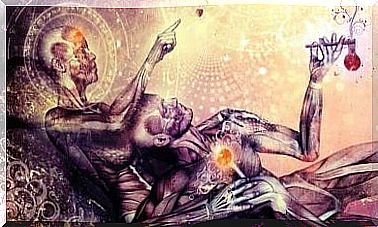Mark Twain: The Biography Of The “Father” Of American Literature
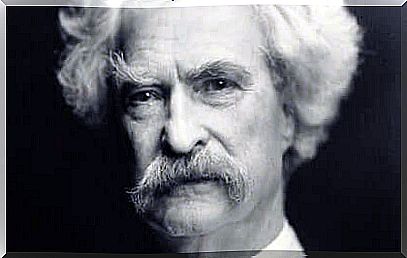
William Faulkner defined Mark Twain as the “father” of American literature, so today we’re going to talk about his biography.
In his day, newspapers saw Samuel Langhorne Clemens as a philosopher, an intellectual with an adventurous air, acidic and highly intelligent writing, capable of presenting us with unforgettable characters, such as Tom Sawyer, or his best friend, Huckleberry Finn .
We are not afraid to say that if the UK had Dickens, in the US literature and journalism were illuminated by a similar figure. Mark Twain showed in his writing the same mastery and literary originality.
In addition, he has always had great gifts as an orator and comedian, taking American culture to a golden age difficult to forget.
Ernest Hemingway even said that American literature began and ended with him. Clearly, this is a bit of an exaggerated opinion, as we also have Edgar Allan Poe, Nathaniel Hawthorne, and Herman Melville.
However, there was something that set Mark Twain apart exquisitely. No one described the social character, inequalities and portrayal of American society at the time so well. Its language was not refined, it did not emanate the essence of East Coast writers.
Twain was an adventurer from the Missouri lands and exhibited the simplicity and purity of the humble folk of the southern states, where slavery, necessity, and the highest insight dwelled.
Samuel, an adventurer from Mississippi
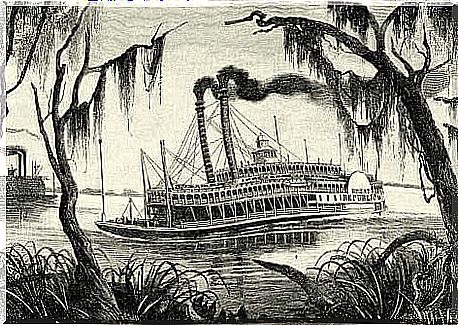
The biography of Mark Twain, or Samuel Langhorne Clemens, begins with his birth on November 30, 1835, in Missouri. He started using the pseudonym Mark Twain from 1862 onwards, to write his books after several years working as a river steamboat pilot.
His childhood and all the complex experiences experienced in that early youth marked, as was to be expected, a large part of his stories and his attentive, adventurous and strongly critical character.
Among the stories that most marked his life, there is the fact that he was born exactly when Halley’s comet approached Earth. However, what determined much of his early years was undoubtedly his family’s financial needs.
He couldn’t finish school, so he started working as a typographer early on and later as a river pilot.
After the start of the Civil War (1861-1865), Samuel left his job and decided to go to Nevada in search of gold. His brother had been named secretary to the governor of that state. So, he did not hesitate to spend a few years getting to know those lands.
He tried to get rich (unsuccessfully), lived with Mormon peoples, worked as a journalist for the Territorial Enterprise, and later embarked again on new journeys. This time, he walked through Europe until he reached the Middle East.
The birth of Mark Twain
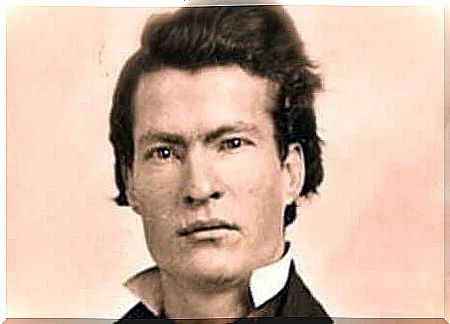
Samuel Langhorne Clemens gave way to Mark Twain after the publication of a short story: The Famous Jumping Frog of Calaveras County. The success obtained with this work marked a before and an after in his life. So, after this literary recognition, came:
- Guide for Innocent Travelers (1869)
- Innocents Abroad (1882)
- The Prince and the Beggar (1882)
- A Yankee at King Arthur’s Court (1889)…
All these titles are mere examples of the creative capacity and originality of a figure who was building for himself a place of his own in the American cultural society of the time.
By then, he had already married Olivia Langdon and lost his first child, Susy, who died of diphtheria at the age of two.
That loss led him to feel a special closeness to the world of children and youth. It was in 1876 that he released his signature book: Tom Sawyer. Later came Hucleberry Finn .
These are two literary treasures that contained in their pages much more than the simple adventures of a boy during the days before the Civil War.
Mark Twain dissected in detail (through a comic and acidic style) the essence of the United States of the time, where racism, hunger, social differences and human cruelty were very present.
The stories were inscribed in a setting widely familiar to Samuel: the Mississippi coast, where the most heterogeneous characters, the most ingenious creatures inhabited…
Personal Drift and Recognition in Mark Twain’s Biography
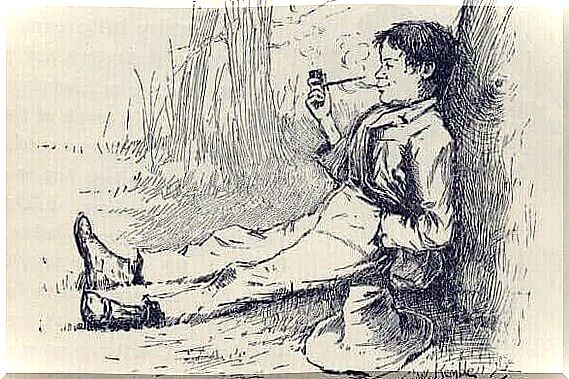
Mark Twain was one of the most committed human rights figures of the time. He was a staunch supporter of abolitionism and, in turn, defended the need for justice and respect for other ethnic communities and the emancipation of women.
He also made one of the most famous speeches of the time defending the female vote.
At the same time, Mark Twain was impressed by the deaf-blind political activist Hellen Keller, and he was always concerned about her well-being. He even paid for his training.
However, the adventurous and risky character of old Samuel L. Clemens never left him. This ended up causing him to face financial difficulties at the end of his life. He was a terrible investor and managed to survive with difficulty by giving lectures.
His last years were marked by suffering. He lost his wife and children. Saying goodbye to those he loved took away some of the brilliance and genius of his books.
However, Oxford University awarded him an Honoris Causa Doctorate for his talent. A recognition for his style and literary legacy that we continue to enjoy today.








